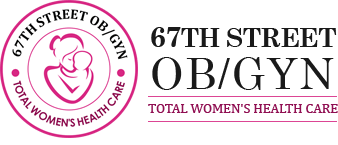 Implanon Nexplanon implants in Manhattan: The use of birth control has become popular in the modern world among women, some resorting to the use of implants. Implants, being one of the most reliable birth control methods, have found favor among many women trying to prevent unwanted pregnancies. Knowing facts about it is an essential step towards settling on the best implant to use.
Implanon Nexplanon implants in Manhattan: The use of birth control has become popular in the modern world among women, some resorting to the use of implants. Implants, being one of the most reliable birth control methods, have found favor among many women trying to prevent unwanted pregnancies. Knowing facts about it is an essential step towards settling on the best implant to use.
Nexplanon Implant is the newest version of the contraceptive known as Implanon. Though used interchangeably, the two words mean the same thing but used under different time scales. Implanon is the precursor version of Nexplanon progestin contraceptive with 66 milligrams of etonogestrel substance. The contraceptive is known for its effectiveness, preventing pregnancy for up to five years once inserted.
The contraceptive works by releasing hormones, in this case, progestin, into the body and blocks conception from taking place. It is inserted into the arm of the patient and works for up to 3 years. Once the period is over, the implant can be removed and a new one implanted.
Components
The implant is comprised of soft, flexible polymer approved by the United States Food and Drug Administration abbreviated as FDA.
Implantation
The birth control is inserted beneath the skin on the upper arm. Nexplanon contraceptive must be inserted by a certified medical professional to avoid any complications. Before the insertion, care must be taken to ensure that the area of insertion is anesthetically numbed. Once done, the professional will then use a special applicator that guides the Nexplanon into the skin. It should be remembered that the operation only takes a few minutes and must be followed by a small pressure bandage worn for 24 hours.
Just like any other medications, implants are foreign hormones in the body and are bound to react with the body. The most notable side effects of the implant are swelling and mild pains. In case of serious complications, reaching a physician would prove most helpful.
Working Mechanism
- In the first six weeks, about 65 micrograms of progestin hormones are released daily
- As the first year ends, about 40 micrograms get released daily
- As the second year ends, about 35 micrograms get released daily
- As the third year ends, about 30 micrograms of the progestin get released daily
- The progestin hormone blocks the eggs from leaving the ovaries, thereby stopping ovulation from taking place
- Progestin hormone forms thick mucus on the cervix to prevent sperms from swimming through to the egg. Barring sperms from getting to the egg stops pregnancy from taking place.
It should be remembered that if the implant is not changed after the three years of insertion, the etonogestrel levels may not be effective in stopping pregnancy from taking place.
Effectiveness
Nexplanon is proven with certification approval of 99.9 percent when correctly implanted. With exclusive use, one in every a hundred women with Nexplanon implant for a year becomes pregnant. Comparatively, the implant proves less effective in overweight women compared to those with lower body mass index. In such circumstances, it would be appropriate for the doctors to recommend the replacement of the implant between the second or the third year when obese women are implanted.
Benefits
Nexplanon is a significant improvement over the predecessor (Implanon), with more benefits. Among the benefits include:
- Being private and discreet
- Does not require daily dosage or maintenance
- The best option for women allergic to estrogen-only contraceptive
- Permits sexual spontaneity
- Applicable to teenagers
- Allows room for breastfeeding after implantation
- Few hormonal imbalances as a result of its steady delivery
Side Effects
The most notable side effects of the implant are unpredictable menstrual flow including changes in intensity, frequency, or duration of the flow. It is the unpredictability of bleeding that discouraged most women from using Nexplanon.
About one out of five women miss their periods entirely. In other instances, one in every five women either has prolonged or frequent menstrual flow. Notably, the flow pattern one experiences in the first three months is a pointer of what they should expect in months ahead.
If you have any questions or concern, feel free to contact us.
